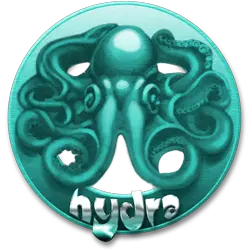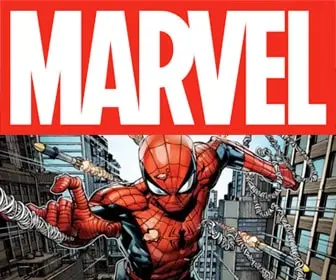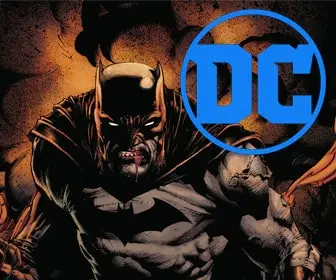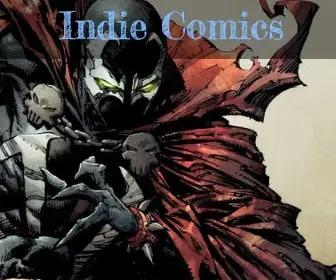
From Brainstorm to Panels: How to Write Your First Comic Script

Unleash Your Story: Your First Draft – From Idea to Comic Script
You have a spark. A vision. Maybe it’s a lone hero fighting giant robots, a group of friends solving a supernatural mystery, or a slice-of-life comedy about cafeteria food. Whatever it is, that idea for a comic book burns inside you. But how do you take that awesome concept floating in your head and turn it into something real, something you can eventually draw and publish?
It all starts with your first draft – specifically, your comic script. Think of your script as the blueprint for your comic. Professional builders don’t just start hammering nails; they use detailed plans. As a comic creator, you don’t just start drawing; you craft a script. This blog post will guide you through the exciting process of transforming your raw ideas into a structured, compelling comic script, making your creative journey smoother and more effective.
Phase 1: The Spark – Brainstorming Your Core Idea
Every great comic begins with an idea. But an idea isn’t a story yet. It’s a seed. Your first step involves giving that seed everything it needs to sprout into something promising. Don’t censor yourself here; write down every wild, crazy, or seemingly silly thought that comes to mind.
Why this matters: Skipping this phase means you might start writing without a clear direction. You could run out of steam, your story might wander aimlessly, or you might realize too late that your core idea isn’t strong enough to carry a full comic. Taking the time to explore your idea thoroughly gives you a solid foundation.
How to make it happen:
- The High Concept: Can you describe your comic in one sentence? This is your “elevator pitch.” For example: “A teenage wizard accidentally unleashes ancient evil during detention.” This concise summary helps you focus.
- What’s the Genre? Is it sci-fi, fantasy, horror, romance, comedy, or something else entirely? Knowing your genre helps you understand reader expectations and common story elements.
- Who is Your Protagonist? Who drives the story? Give them a name, age, a defining personality trait, and a goal. What do they want more than anything? What is their biggest flaw?
- What’s the Conflict? What stands in your protagonist’s way? This could be a villain, an internal struggle, a natural disaster, or a societal problem. Strong conflict creates an engaging story.
- What’s the World Like? Is it modern-day Earth, a futuristic metropolis, a magical kingdom, or a dystopian wasteland? Jot down key details about your setting. How do people live there? What are the rules?
- Brainstorming Techniques:
- Mind Mapping: Start with your core idea in the center. Branch out with characters, plot points, settings, themes, and conflicts.
- Freewriting: Just write continuously for 10-15 minutes without stopping, even if it’s nonsense. Don’t worry about grammar or spelling. The goal is to get thoughts onto the page.
- The “What If” Game: Ask “What if…?” repeatedly. What if my hero fails? What if the villain actually wins? What if a minor character holds a huge secret?
- Character Interviews: Imagine you’re interviewing your characters. What do they tell you about their lives, their hopes, and their fears?
Crucial Advice: Keep a dedicated notebook or digital document just for your brainstorming. You’ll thank yourself later when you need to remember that cool idea you had at 3 AM.
Phase 2: The Map – Outlining Your Story Arc
Once you have your core idea and characters, you need to map out your story. Think of it like planning a road trip. You know your destination (the ending), but you also need to know the major stops along the way (plot points). This outline becomes your roadmap, keeping you on track.
Why this matters: Without an outline, your story can meander, lose focus, or feel rushed. You might create plot holes or discover your characters have no clear journey. An outline ensures your story has a beginning, a middle, and an end, with compelling events connecting them. It helps you manage the scope of your comic, especially if it’s a single issue or a short graphic novel.
How to build your outline:
- The Three-Act Structure: This classic storytelling model works incredibly well for comics.
- Act 1: The Setup (Pages 1-X): Introduce your main characters and their everyday world. Establish the “normal.” Then, introduce the “inciting incident” – the event that throws their world into chaos and starts the main conflict. Your protagonist receives the call to adventure (or it crashes into them!).
- Act 2: The Confrontation (Pages X-Y): This is the longest act. Your protagonist faces obstacles, experiences setbacks, and tries different strategies to achieve their goal. They might discover new abilities, meet allies, or confront the antagonist directly. The tension builds towards a “midpoint twist” (a new revelation or turning point) and then to the “climax setup,” where all hope seems lost.
- Act 3: The Resolution (Pages Y-Z): Your protagonist faces their ultimate challenge – the climax! They use everything they learned to confront the conflict head-on. The story then moves to the “falling action,” where the immediate consequences unfold, and finally, the “resolution,” showing how the world and characters have changed.
- Chapter or Scene Breakdown: Break down your overall story into smaller chunks. For a typical single-issue comic (around 20-24 pages), you might outline page by page or sequence by sequence. For longer graphic novels, you’ll likely outline chapter by chapter.
- For each chapter/sequence, write down:
- Key events: What major plot points happen?
- Character development: How do your characters change or learn something new?
- Setting: Where does this part of the story take place?
- Emotional beats: How do you want the reader to feel?
- For each chapter/sequence, write down:
- Character Arcs: How does your protagonist change from the beginning to the end? What lesson do they learn? What internal flaw do they overcome? Outline these changes alongside your plot points.
Flexibility is Key: Your outline is a guide, not a prison. As you write your script, new ideas will pop up. Embrace them! If a better idea emerges that strengthens your story, adjust your outline. It’s a living document.
Phase 3: The Blueprint – Writing Your Comic Script
Now for the main event: transforming your outline into a detailed comic script. This document tells your artist (or you, if you’re doing both roles) exactly what to draw on each page and panel, and what every character says.
Why this matters: A good script is a clear instruction manual. If your script is confusing or incomplete, your artist won’t know what to draw, leading to wasted time, frustration, and a comic that doesn’t match your vision. A well-written script streamlines the entire production process.
Understanding Comic Script Format: While no single “perfect” format exists, most professional comic scripts follow a similar structure.
- Page Number: Each new page of your comic gets a new page number in your script.
- Panel Number: Within each page, you number each panel sequentially (Panel 1, Panel 2, etc.).
- Panel Description: This is where you describe what happens visually in the panel.
- Camera Angle: Do we see a close-up, a wide shot, a bird’s-eye view?
- Characters: Who is in the panel? What are they doing? What are their expressions?
- Setting Details: What specific elements are in the background or foreground?
- Action: What is the main action occurring in this panel? Be clear and concise. Don’t write a novel; describe what the artist needs to draw.
- Dialogue: Below the panel description, you write the character’s name in ALL CAPS, followed by their dialogue.
- CHARACTER NAME “Hello, world!”
- Sound Effects (SFX): Write sound effects in ALL CAPS, often followed by a short description.
- SFX: KRAKOOM! (building explodes)
- Captions/Narration: If a character’s thoughts or a narrator’s voice appears in a box, you label it CAPTION or NARRATION.
- CAPTION (V.O. – Voice Over) The city slept, unaware of the lurking danger.
Step-by-step Scripting:
- Page by Page: Take your outline and start on Page 1. What’s the very first image the reader sees? What’s the first line of dialogue?
- Panel by Panel: Break down each page into individual panels. A typical comic page has 4-6 panels, but some might have fewer (for dramatic effect) or more (for dense information).
- Consider the flow: Do your panels lead the reader’s eye smoothly from left to right, top to bottom?
- Vary panel sizes: Don’t make every panel the same size. Bigger panels give impact to important moments. Smaller panels speed up the pacing.
- Page Turns: Think about what happens on the very last panel of a page. Does it create a cliffhanger? Does it make the reader eager to turn the page?
- Show, Don’t Tell: This is a golden rule for all storytelling, especially comics. Instead of saying, “He was sad,” describe his expression: “Panel 3: CLOSE-UP on MARK’S face. Tears well in his eyes, his lower lip quivers.” The artist then draws the sadness.
- Dialogue Check:
- Purposeful Dialogue: Does every line of dialogue serve a purpose? Does it reveal character, advance the plot, or provide necessary information?
- Natural Sounding: Read your dialogue out loud. Does it sound like real people talking?
- Concise: Comic panels have limited space. Don’t write long paragraphs of dialogue. Break it up across panels if necessary, or simplify it.
- Lettering Notes (Optional but Helpful): You can include notes for your letterer about font styles (e.g., “whisper font,” “shout font”) or balloon shapes, but often the letterer handles these creatively.
- Revisions, Revisions, Revisions: Your first draft will not be perfect. That’s fine! Professional writers revise constantly.
- Read it Aloud: This helps you catch awkward dialogue or clunky descriptions.
- Check Pacing: Does the story move too fast or too slow in certain parts?
- Continuity: Do characters suddenly appear in different clothes? Does the setting change inexplicably? Check for consistency.
- Feedback: Share your script with trusted readers (friends, family, or a writing group). Ask for honest feedback. (We covered this in a previous post!)
Tools for Scripting:
- Word Processor: Microsoft Word, Google Docs, Pages – these work fine. Just use clear headings and consistent formatting.
- Specific Scripting Software: Programs like Celtx, WriterDuet, or even dedicated comic script templates for Word can help with formatting. They often handle numbering and layout automatically.
- Plain Text Editor: Some writers prefer the simplicity of a basic text editor to avoid distractions.
Phase 4: The Polish – Refining Your First Draft
You’ve got a complete script! That’s a huge accomplishment. But a “first draft” is just that – a first pass. Now, you refine it, making it stronger, clearer, and ready for your artist.
Why this matters: A polished script saves everyone time. It prevents misunderstandings with your artist, catches plot holes before they become permanent ink, and ensures your story shines. This is where you transform a rough diamond into something brilliant.
How to polish your script:
- Step Away: Take a break from your script for a day or two, or even a week. When you return, you’ll see it with fresh eyes, catching mistakes or awkward phrases you missed before.
- The “Artist Test”: Read your script as if you are the artist. Can you clearly visualize every panel? Do you have enough information to draw it? Is anything missing or confusing?
- The “Reader Test”: Imagine you are a reader picking up this comic. Does the story make sense? Are you engaged? Do you understand the characters’ motivations?
- Cut the Fluff: Comics are a visual medium. If you describe something that the art can easily convey, cut the words. For example, instead of “Panel 1: JOHN walks into the room and closes the door behind him,” just write “Panel 1: JOHN enters the room, pulling the door shut.” The art shows the walking.
- Strengthen Dialogue: Read every character’s dialogue. Does it sound unique to them? Could another character say the same line? If so, make it more specific to that character. Are there too many “um”s or “uh”s?
- Pacing Adjustment: Does the action move too slowly? Combine panels. Does it jump too fast? Add more panels for detail or reaction shots.
- Check for Consistency: Ensure character names, appearances, and plot details remain consistent throughout.
Your Journey Begins Here!
Writing your first comic script is a monumental task, but it’s also incredibly rewarding. It forces you to think deeply about your story, your characters, and how you will tell your tale visually. You are essentially directing a movie on paper, panel by panel.
Don’t let the idea of a “perfect” first draft stop you. The goal is to get your ideas down, establish your story’s framework, and create a solid working document. Every professional comic you love started as a script, a carefully crafted blueprint. Now, you have the tools to create yours. Go forth, write that script, and unleash your amazing comic upon the world!










